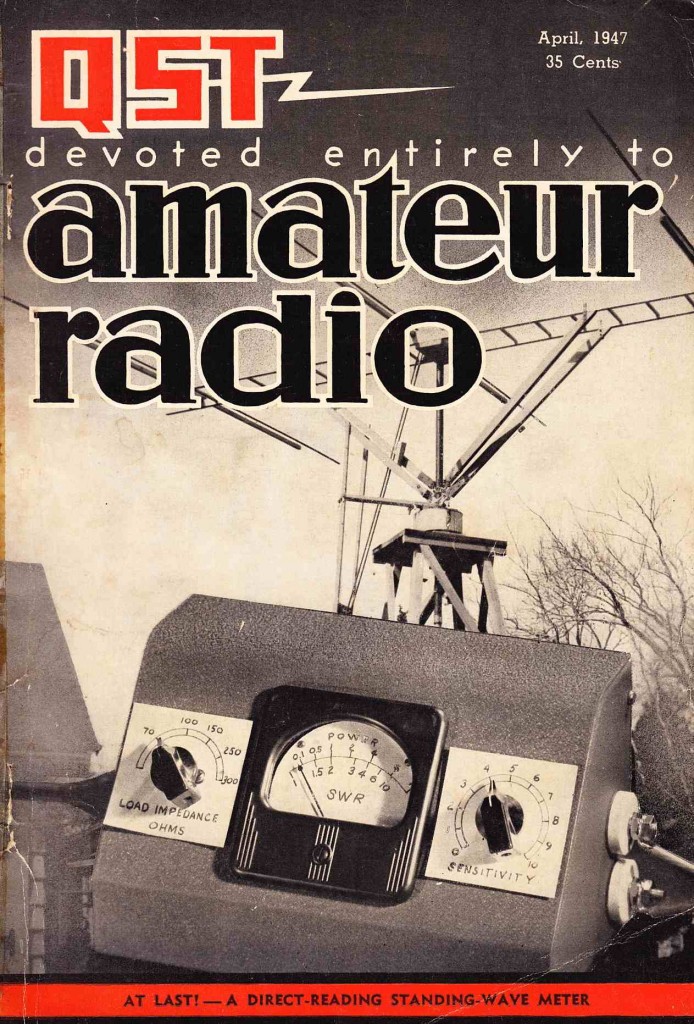 QST magazine is the monthly publication of the American Radio Relay league (h.f. ARRL). ARRL has published QST since 1915. The ARRL is the main membership organization for ‘Hams,’ otherwise known as amateur radio operators. We discussed Hams a bit in this previous post on vernacular graphics. I am not a Ham radio-operator, and I know next to nothing about radio-frequency broadcasting equipment. But, since most Ham radio broadcast-chains begin with the human voice and a microphone, and it is largely a DIY-type activity, there is plenty of relevant content in these old magazines.
QST magazine is the monthly publication of the American Radio Relay league (h.f. ARRL). ARRL has published QST since 1915. The ARRL is the main membership organization for ‘Hams,’ otherwise known as amateur radio operators. We discussed Hams a bit in this previous post on vernacular graphics. I am not a Ham radio-operator, and I know next to nothing about radio-frequency broadcasting equipment. But, since most Ham radio broadcast-chains begin with the human voice and a microphone, and it is largely a DIY-type activity, there is plenty of relevant content in these old magazines.
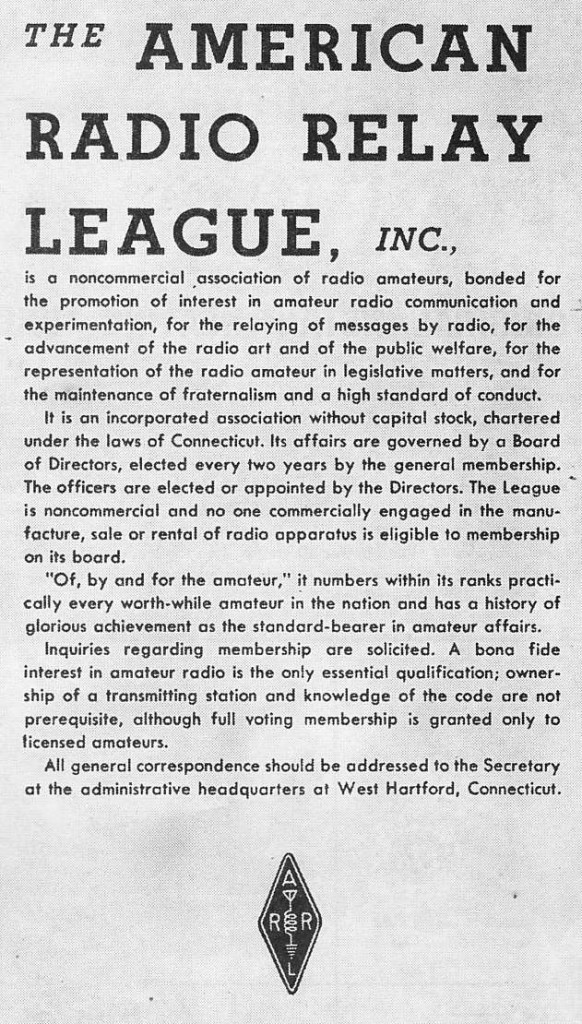 Above is the ARRL’s mission-statement as published in 1947. Anyhow, over the next few days I will post a few interesting bits from QST in the immediate post-WW2 era. There was a tremendous surge in amateur radio activity at the time, owing to the return home of the servicemen who had learned radio-technology in the war.
Above is the ARRL’s mission-statement as published in 1947. Anyhow, over the next few days I will post a few interesting bits from QST in the immediate post-WW2 era. There was a tremendous surge in amateur radio activity at the time, owing to the return home of the servicemen who had learned radio-technology in the war.
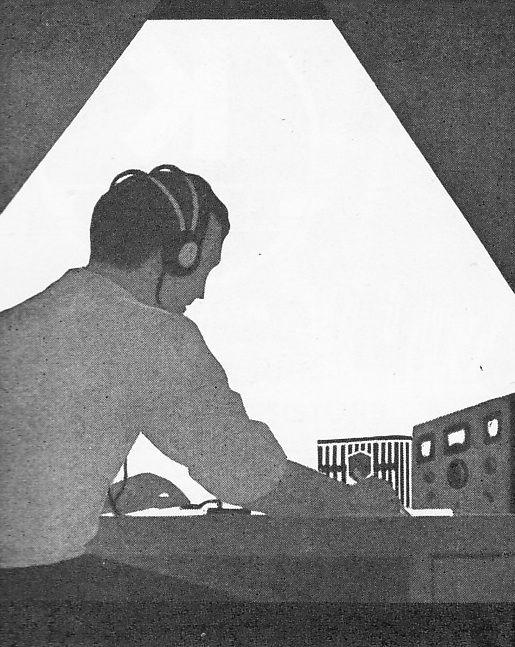 These men had been given an introduction to radio and electronics in the most intense possible situation -the life-and-death struggle of global warfare – and it’s no surprise that this powerful link would fuel an intense post-war peacetime interest in Ham activity.
These men had been given an introduction to radio and electronics in the most intense possible situation -the life-and-death struggle of global warfare – and it’s no surprise that this powerful link would fuel an intense post-war peacetime interest in Ham activity.
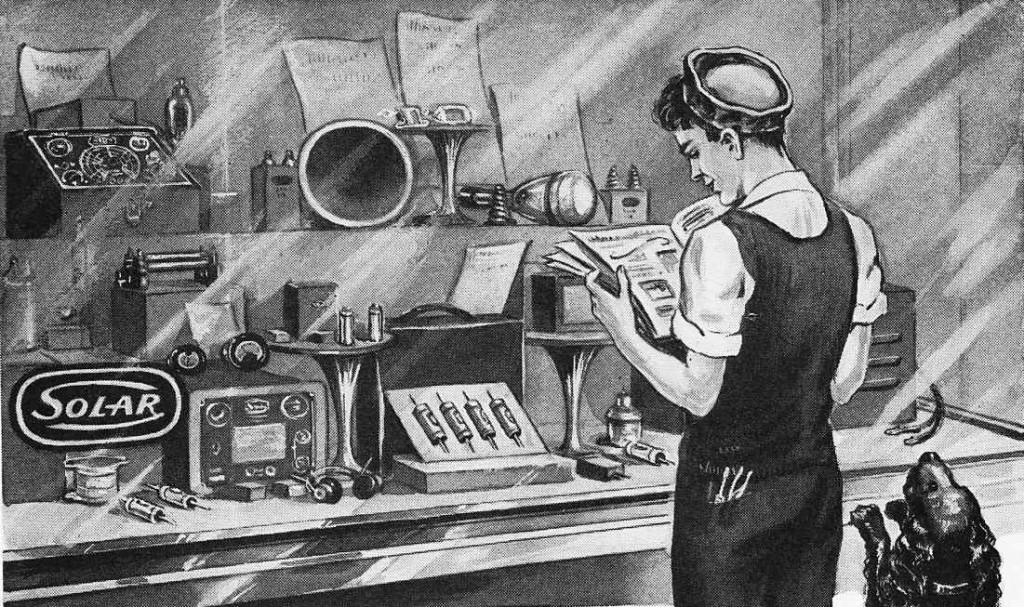 Above: a Tom-Of-Finland-esque advert for Solar Capacitors from a 1947 QST.
Above: a Tom-Of-Finland-esque advert for Solar Capacitors from a 1947 QST.
We’ll start today with a couple of interesting schematics for push-pull audio amps: a 6F6 15 watt push-pull amp, and a cathode-coupled 6L6 40 watt amp. I have never used a 6F6. Anyone? And I don’t recall ever having seen a cathode-coupled push-pull driver circuit. Check ’em out…
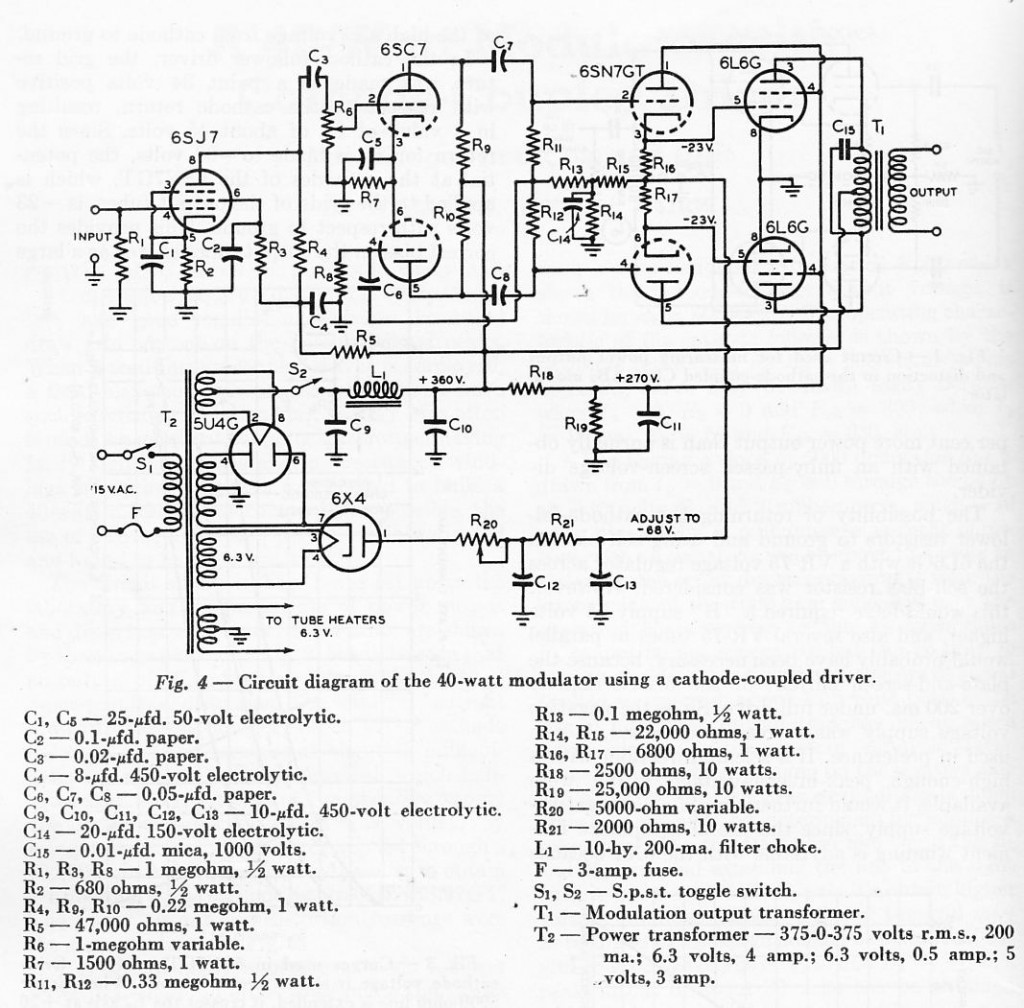 Tomorrow: Turner Ham mics of the 1940s.
Tomorrow: Turner Ham mics of the 1940s.
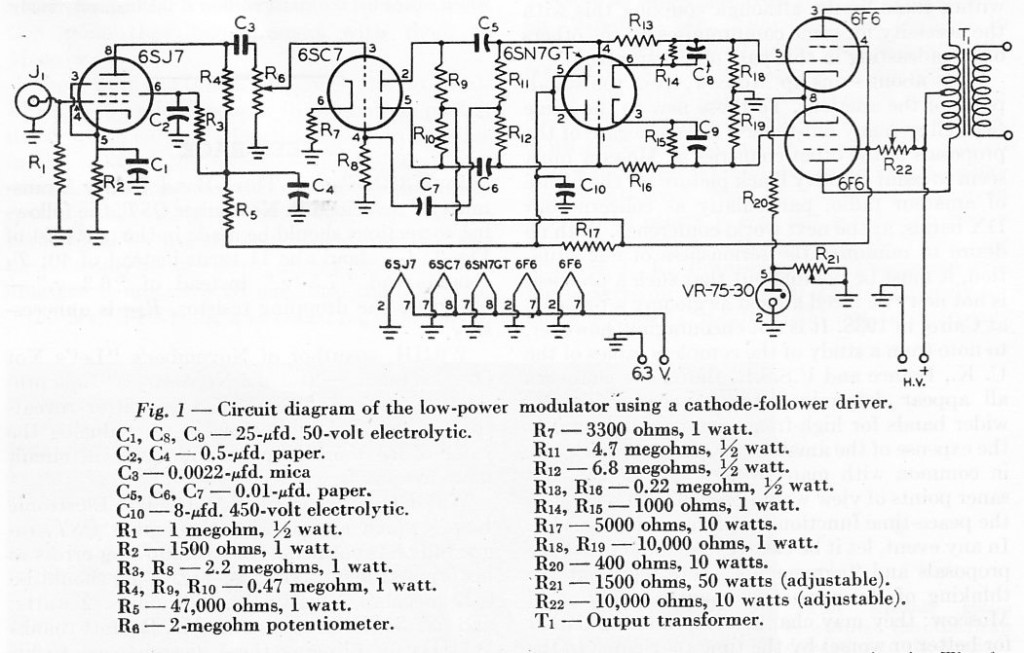
6 replies on “QST Magazine in the 1940s”
The best first project using tubes anyone can build is a 1930s or 40s style regenerative radio. You have to wind the coild, but that’s a feature, not a bug. It’s simple with a homemade winder.
All good AM transmitters until the 1950s and most tube ones thereafter used plate modulation with a modulator that was nothing more than a big old power amplifier, with an output transformer specially designed to provide the proper reflected load (in the several thousand ohm range usually) and stand off unbalanced DC in the secondary.
But. Those modulators were designed to run at high peak to constant load ratios. Few used negative feedback, which is necessary for fidelity, and they were NOT very good high fidelity amps. They’d work OK for PA purposes if the modulation transformer had another winding or was strappable for the needed load, or were replaced, but are generally nothing to want to copy today if you aren’t building a vintage AM ham station.
The ARRL books are a great reference but the modulator designs are not good amp projects.
Pete Millett has a lot of this old stuff for free as downloads on his web site. I have several old radio and audio books my father left me. Look for the old Ghirardi radio books, the Shea’s Amplifier Handbook, and the Professional Broadcast Engineering Guide, plus the Audio Cyclopedia and Newitt’s High Fidelity Techniques.
A lot of the audio stuff has been reprinted by Ed Dell’s Old Colony Sound Lab. The sttrictly RF stuff is still cheap at hamfests.
My Ham “career” started about 1950. The 6F6 was very common then in most handbook circuits, but by then the beam-power tubes (6L6, 6V6, 50L6, etc) had eclipsed them with their greater gain and efficiency, so I never used on in a new design. The cathode-follower was a common option for a low-impedance driver transformer.
The 6F6 is a true pentode and gives a high. gain by prewar standards with its high load. It also makes a good buffer for a hf vfo. I have read that it is microphonic sometimes . As high mu triode it can be used as a harmonic generator.
Is there an interest in Old QST Magazines from 1937, 38 and 39. I have a complete year of each.